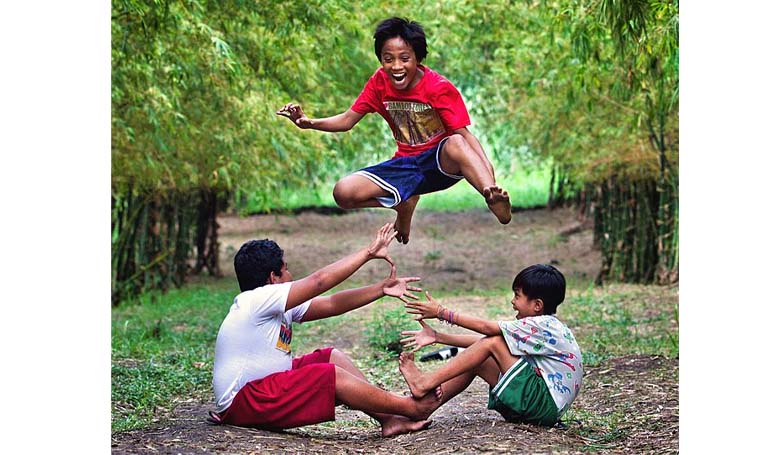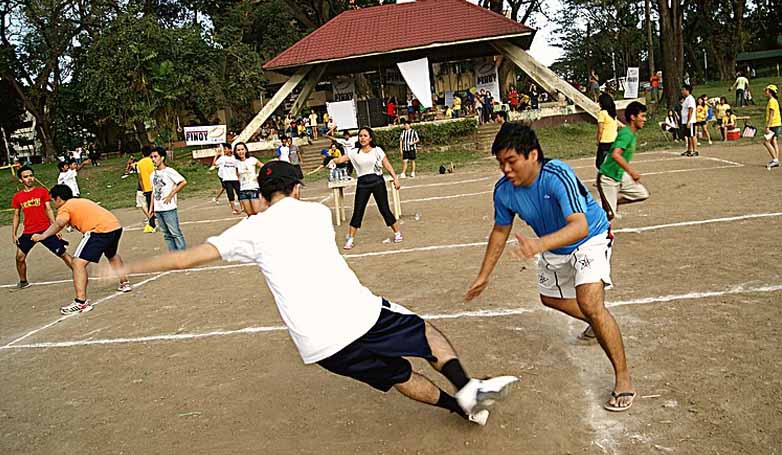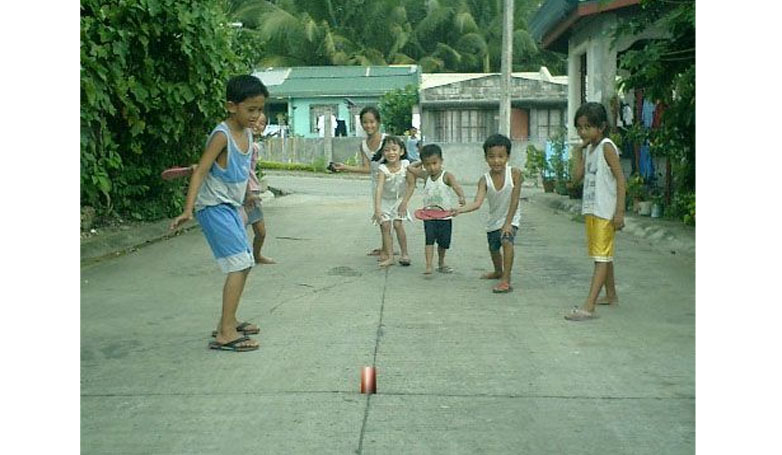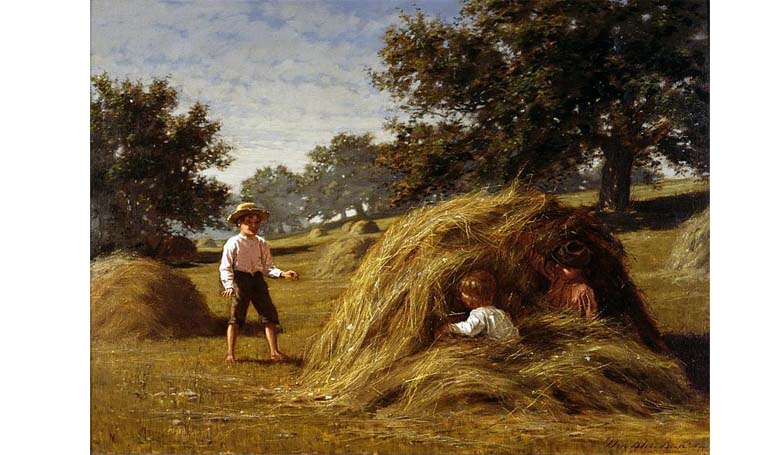Step Into the fun-filled World of Filipino Traditional Games!
Traditional Filipino games, often known as “Laro ng Lahi,” are not merely pastimes but embody the vibrant heritage and communal spirit of the Philippines. These games have been passed down through generations, serving as a testament to the creativity and playfulness inherent in Filipino culture. From the strategic maneuvers in “Sungka” to the thrilling physicality of “Patintero,” each game encapsulates a piece of collective identity and offers a glimpse into the simplicity and joy of traditional Filipino childhood. As you read on, prepare to be immersed in a world of nostalgic merriment and discover the timeless charm that these cherished games hold.
1. Sipa Washer Version

The Sipa washer version is a traditional Filipino game commonly played using a small, flat washer with ribbons or a tuft of threads attached to it. The objective of the game is to keep the washer (called “sipa” in Filipino, which also means “kick”) in the air for as long as possible using one’s feet, heel, and sometimes the side of the leg. It requires dexterity, agility, and precise timing to control the washer and perform various tricks. This game is often seen in streets or open spaces, where players demonstrate their skill by executing consecutive kicks and keeping the sipa airborne without letting it touch the ground.
Trivia
- In 2009, the word’sipa’ was included in Merriam-Webster’s Collegiate Dictionary, affirming its cultural significance.
- Before the introduction of the washer version, early sipa was sometimes played using a natural object like a dried seed, bundled leaves, or a flat stone.
- Some historians believe that sipa has origins that date back to the 15th century, further underscoring its longevity and deep-rooted presence within Filipino culture.
2. Luksong Tinik

Luksong Tinik is a Filipino traditional game that involves players jumping over a stack of hands that simulates thorny sticks, reflecting its literal translation “jumping over thorns”. It is played usually by children and requires a mix of agility, strategy, and teamwork. Two players will serve as the base by putting their feet and hands together to form the tinik, while other participants attempt to jump over without touching any part of the stack. As the game progresses, the base players raise the height of the tinik by stacking their hands one over the other, making each round more challenging. This game fosters camaraderie and physical fitness, being a staple at Filipino playgrounds and schoolyards.
Trivia
- In some regional variations of Luksong Tinik, players chant traditional Filipino rhymes to elevate the jumping experience and put players in rhythm.
- UNESCO has recognized traditional games and sports, like Luksong Tinik, as important parts of intangible cultural heritage, underscoring the need to preserve such activities in the face of globalization and technological advancements in entertainment.
- Traditionally, the role of the ‘taya’ or ‘it’ in Luksong Tinik – the players who form the tinik – is assigned either through a game of ‘rock-paper-scissors’, a quick counting-out game, or by random voluntary choice, incorporating another layer of spontaneous decision-making into the experience.
3. Patintero

Patintero, also known as “harang taga” or “tubigan,” is a classic game that stands as a hallmark of Filipino traditional games. Played outdoors on a flat surface, it requires a grid to be drawn on the ground, where the aim is for the attacking team to cross the grid lines without being tagged by the defenders, who must guard the lines with agility and strategy. Often chalk or water is used to mark the rectangular grid, and the game fosters teamwork, speed, and quick thinking. Engaging and energetic, Patintero unites players across multiple generations, keeping the thrills of Philippine childhood games alive.
Trivia
- The word ‘Patintero’ comes from the Spanish ‘tintero’, which means inkwell, symbolizing the grid lines traditionally drawn with ink or charcoal.
- Patintero is often played during Filipino town fiestas, reflecting its cultural significance and the community’s appreciation for traditional recreation.
- A team wins in Patintero by either successfully crossing the grid lines a specific number of times without being tagged or by tagging all opponents when defending.
4. Tumbang Preso

Tumbang Preso, a beloved Filipino outdoor game, involves knocking over a can from a circle on the ground using slippers or any flat object. Players take turns throwing their objects from a designated line, while one player guards the can as the “it” or “taya.” The “taya” aims to put the can upright and catch the other players before they retreat behind the line. This game requires skill, strategy, and agility, providing endless enjoyment for participants.
Trivia
- Tumbang Preso literally translates to “knocked down prisoner,” reflecting the gameplay where players aim to knock down the target while avoiding getting caught.
- The game is often played during Filipino fiestas and school recess periods, serving as a tool for both entertainment and physical activity.
- Players typically use worn-out flip-flops as the throwing object, making it a game that requires minimal resources and can be played by anyone.
5. Piko
Piko, a classic entry in Filipino traditional games, is similar to hopscotch and has been a popular pastime for children in the Philippines for generations. It involves a grid drawn on the ground, where players must toss a small object like a stone or a piece of tile into the designated squares and then hop or skip through the spaces to retrieve it while balancing on one foot. The layout of the grid varies, and the game is often accompanied by chanting and singing. Piko develops agility, balance, and coordination. This game is typically played on dirt, concrete, or any flat surface and is a hallmark of childhood in Filipino culture.
Trivia
- Unlike standard hopscotch, Piko often has more intricate patterns, depending on the players’ preferences or regional variations.
- Piko can be played solo or with a group, where turns are taken and sometimes involves eliminating players based on their ability to complete the course accurately.
- The game’s name, “Piko,” is derived from the Filipino word “piko-piko,” which means “to hop on one foot.”
6. Taguan

Taguan is a popular Filipino game similar to hide and seek, played by children across the country. One person is chosen as ‘it’ and counts to a certain number while the others hide. Once the countdown is over, the seeker shouts, “Ready or not, here I come!” and begins looking for the hidden players. The objective is for the hiders to avoid being found and make it back to the base without being caught. Taguan promotes creativity, agility, and strategic thinking, as players must choose their hiding spots wisely and time their return to safety carefully.
Trivia
- A unique rule in Taguan involves the “taya,” or seeker, shouting “1-2-3” followed by a player’s name if they spot someone hiding, confirming their discovery.
- Traditionally, players would signal the start of the game with the chant “Taguan, maliwanag ang buwan,” which means “Hide and seek; the moon is bright.”
- This game is often played during late afternoons, known as “hapon” in Filipino, as a way for children to enjoy the cooler temperatures after school.
7. Palo Sebo

Palo Sebo is a Filipino traditional game that features a tall, greased bamboo or wooden pole that contestants attempt to climb in order to reach a flag or a prize at the top. The goal of this game is to scale the slippery pole, which is usually slathered with oil or grease to increase the challenge. It is a highlight at town fiestas and festivals, symbolizing perseverance and camaraderie among participants. As part of Filipino traditional games, it offers spectators an entertaining display of strategy, strength, and agility. Contestants often work together to boost someone to the top or strategically remove some of the grease, showcasing not only individual skill but also teamwork.
Trivia
- Palo Sebo is derived from Spanish influence, as “palo” means “pole” and “sebo” means “grease” in Spanish.
- The prizes at the top of the pole can vary from small bags of money to everyday items like a sack of rice or live chickens.
- Participants typically climb barefoot or with minimal footwear to improve grip and feel on the greasy surface.
These Games Aren’t Just Child’s Play They’re Cultural Treasures!
And there you have it—a peek into the enchanting arena of traditional Filipino games that have withstood the test of time and the digital age. These games are more than mere pastimes; they embody the agility, wit, and communal spirit of the Filipino people. They serve as living memories that continue to bring communities together, fostering a sense of unity and enduring cultural identity. Whether you’re interested in cultural preservation, seeking new recreational activities, or simply curious about the games that shaped generations, the heart-pounding excitement of these traditional Filipino games is waiting for you. So, lace up your sneakers, stretch those muscles, and let the games begin—the Filipino way!
Traditional Filipino Games FAQs
Here are the most common questions about traditional Filipino games.
1. How can tourists experience traditional Filipino games when visiting the Philippines?
Tourists can experience these games by visiting during festivals and community events, where they are often showcased and even taught to visitors. Tourist areas and cultural villages sometimes organize traditional game demonstrations, and tour guides may incorporate them into their itineraries. This offers an immersive cultural experience for visitors wanting to learn about Filipino traditions.
2. What is the impact of urbanization and technology on traditional Filipino games?
Urbanization and technology have had a significant impact on traditional Filipino games. The limited outdoor spaces in urban areas make it challenging to play these physically engaging games. Additionally, the lure of technology, such as video games and social media, has decreased the interest of the younger generation in these physical forms of play. Despite this, there’s a growing movement to revitalize interest in Filipino heritage, which includes the promotion of traditional games.
3. How can one learn these traditional Filipino games if they’re not in the Philippines?
One can learn about traditional Filipino games through various online resources like videos, tutorials, and written descriptions of the game rules. Filipino communities abroad often preserve their cultural practices by teaching these games to their children and organizing community events where these games are played.
4. Have any traditional Filipino games been modernized or adapted?
Some of these traditional games have been adapted for the modern context. They may have modified rules, used contemporary materials, or even created digital versions of video games or mobile applications. These adaptations help make the games more accessible and appealing to the younger, tech-savvy generation.











